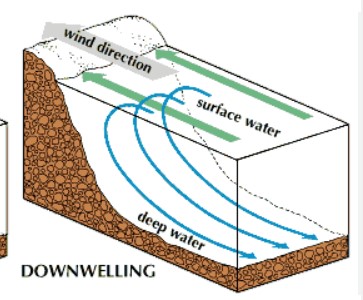Down currents, often referred to as downwellings in the scuba diving community, pose a unique set of challenges and dangers to divers.

However, with the right knowledge and preparation, divers can safely navigate down currents and continue to enjoy the wonders of the underwater world. This article provides practical advice on what to do when encountering a down current while scuba diving
Understanding Down Currents
Down currents occur when water is pushed downward, often along the face of a steep reef or wall. These currents can be caused by tidal movements, differences in water temperature, or the topography of the dive site. Divers caught in a down current may find themselves being pulled deeper with surprising force.
Preparation and Prevention
Knowledge and Planning: Before diving in areas known for strong currents, thorough research and planning are essential. Dive with an experienced guide who knows the area and can navigate away from potentially dangerous spots.

Equipment Check: Ensure all gear is secured and streamline your equipment to minimize drag. A dangling gauge or loose equipment can not only increase drag but also become entangled.
Dive Briefing: Pay close attention during the dive briefing, as guides will often provide information on expected currents and advice on what to do if you encounter a down current.
Recognizing and Reacting to Down Currents
Stay Calm: Panic consumes oxygen and impairs judgment. If you find yourself in a down current, the first step is to stay calm and signal to your buddy or group.
Orientation: Try to orient yourself; look for the bottom, the surface, or the reef wall to understand your direction of movement.
Buoyancy Control: Adjust your buoyancy to become more buoyant. This may involve inflating your buoyancy compensator (BC) to help counteract the downward pull.
Swim Sideways: If possible, swim horizontally away from the down current. Down currents often have less force away from the wall or the reef where they are strongest.
Ascend Slowly: If you’re able to break free from the current, ascend slowly and safely, watching your depth and remaining aware of any symptoms of decompression sickness.
Use a Surface Marker Buoy (SMB): If you are unable to ascend immediately, deploy an SMB to alert those on the surface to your location and situation.
Emergency Procedures: If you find yourself unable to manage the situation, follow your emergency procedures. This may include dropping weights in a controlled manner to aid in becoming positively buoyant or using an alternate air source if necessary.
Training and Experience
Experience is a crucial factor in safely managing down currents. Advanced training, such as the PADI Advanced Open Water Diver course, often includes drift diving techniques and can be invaluable in preparing divers for these situations. Specialized courses that focus on buoyancy control, emergency procedures, and rescue scenarios are also highly recommended.
Down currents can be intimidating, but with the right preparation, knowledge, and response strategies, divers can safely navigate these underwater challenges. Remember, the key to handling any unexpected situation while diving is to stay calm, think clearly, and use your training. By understanding and respecting the power of down currents, divers can enjoy the beauty and excitement of the underwater world with confidence and safety.

